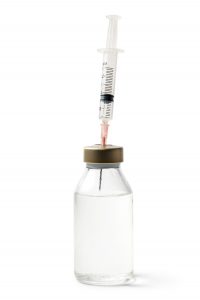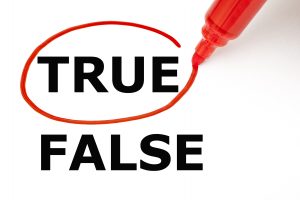A Quick recap
 In the first part of this series of three we covered the history of the inoculation and vaccination development and usage in populations. All these early usages were a bit of luck and bit of science for sure, if it were not that mix, I do not know what would have compelled a reasonable person to think that grinding up smallpox scabs and snorting them was a good idea. Thank goodness that we have those thinkers, they push the boundaries and sometimes even get it right. We also covered what the early 20th century ushered in, and entire new science of communicable disease investigation and work toward eradication. As a result of this we have witnessed diseases wiped from the face of the earth (smallpox) or almost eliminated (polio).
In the first part of this series of three we covered the history of the inoculation and vaccination development and usage in populations. All these early usages were a bit of luck and bit of science for sure, if it were not that mix, I do not know what would have compelled a reasonable person to think that grinding up smallpox scabs and snorting them was a good idea. Thank goodness that we have those thinkers, they push the boundaries and sometimes even get it right. We also covered what the early 20th century ushered in, and entire new science of communicable disease investigation and work toward eradication. As a result of this we have witnessed diseases wiped from the face of the earth (smallpox) or almost eliminated (polio).
Disclaimer
 I feel the need to point out that I (Cale Mitchell) am not a scientist, I am not a physician, and I am not a certified public health official. What I am is a passionate member of the not-for-profit healthcare community. Organizations like Spectrum Health Care work independently to support public health initiatives that positively impact our core service populations. As such, the ideas that are expressed in this and all our blogs are supportive of public health and the methods that those services are delivered.
I feel the need to point out that I (Cale Mitchell) am not a scientist, I am not a physician, and I am not a certified public health official. What I am is a passionate member of the not-for-profit healthcare community. Organizations like Spectrum Health Care work independently to support public health initiatives that positively impact our core service populations. As such, the ideas that are expressed in this and all our blogs are supportive of public health and the methods that those services are delivered.
The other thing that I want to put out there is that this blog is not intended to be a scientific paper, it is an overview of the modern vaccine and vaccination programs. There are entire texts and courses built around this study, so it would be presumptuous of me to think I would be able to capture all the nuanced complexity that is the science of immunology.
On with the show
 The one thing that most of us get wrong is that we believe that vaccination programs are solely intended to remove the disease from the population. In fact, most vaccines are really about mitigation of the most severe side effects of the disease. It would be great if we could get rid of things like influenza, and its variants and have the success of the smallpox program, but for most things that is just not the case. The main goal is to limit deaths and long-term health impact. Sure, you may still get sick but it won’t be as sever and you may not even need hospitalization. – do we have some data we want to toss in here about the % of folks who get ABC disease/bug but nowhere near as sever or requiring hospitalization?
The one thing that most of us get wrong is that we believe that vaccination programs are solely intended to remove the disease from the population. In fact, most vaccines are really about mitigation of the most severe side effects of the disease. It would be great if we could get rid of things like influenza, and its variants and have the success of the smallpox program, but for most things that is just not the case. The main goal is to limit deaths and long-term health impact. Sure, you may still get sick but it won’t be as sever and you may not even need hospitalization. – do we have some data we want to toss in here about the % of folks who get ABC disease/bug but nowhere near as sever or requiring hospitalization?
To that end, vaccination programs have been developed to get people protected. I believe that the NIH (National Institutes of Health) summed it up best when it explained the following:
“Vaccines are one of our most successful tools for protecting the public’s health. It seems simple: a pharmaceutical company develops a new vaccine, the U.S. Food and Drug Administration (FDA) licenses it, health-care providers give it to their patients, and we see disease disappear. But vaccination in the United States is much more complex and only made possible through a robust public-private partnership that begins with the development of the vaccine and continues long after it is used routinely. Along every step of the way, public health—at the national, state, and local levels—plays a fundamental role. The success of the pneumococcal conjugate vaccine (PCV) in preventing suffering, disability, and death is one example that illustrates the essential role of our nation’s public health systems and workforce in protecting us from vaccine-preventable diseases (VPDs).” (National Vaccine Advisory Committee. (2013). Protecting the public’s Health: Critical functions of the SECTION 317 Immunization program-a report of the National Vaccine Advisory Committee. Accessed March 03, 2021, from https://www.ncbi.nlm.nih.gov/pmc/articles/PMC3560865/)
For those of us that have children or remember our own childhood well, we know that we have been part of this public health effort since birth. As a result, we now have a steep decline in childhood illness and death. For most the point of reference is the flu vaccine that is rolled out in the fall of each year, a specialized formulation based on the predicted strains we will encounter that season. So even today there is a bit of guess work and luck mixed into our science, but do not mistake that for sloppy or ineffective product – nothing could be further from the truth.
The public health program relies on all of us participating to limit the spread of disease and make sure our communities and economies are not devastated by and otherwise preventable disease. If there were a classroom setting, we would be given an F as far as participation in flu vaccination goes, the Centers for Disease Control and Prevention (CDC) reported for the 2019-2020 flu season that only 48.4% of those >18 got vaccinated. Then, when you take a look at childhood vaccination programs (data following from a pair of CDC Morbidity and Mortality Weekly Reports issued on October 12, 2018), it’s a very different story. We would be given an A for this one with 95.1% of American children getting the recommended vaccination on time.
So why the disconnect?
 We are willing to protect our children but not ourselves? I think the answer can be found in disinformation. In a 2020 Gallup Poll of Americans 79% said that they had heard about some disadvantage or risk to taking a vaccination. Despite all the overwhelming evidence that is out there about the effectiveness and safety of the vaccine we still like to lean into the bad news. Upwards of 48% of Americans believe that they do not need the flu vaccine and that it increases their risk of getting sick. There is not one shred of empirical evidence that would support that conclusion. This belief system causes a roll over effect, meaning that if we believe it one vaccine, we start to believe it about all of them. This is an especially dangerous as it is estimated that we will continue to see more and more emergent diseases that we will need to vaccinate against.
We are willing to protect our children but not ourselves? I think the answer can be found in disinformation. In a 2020 Gallup Poll of Americans 79% said that they had heard about some disadvantage or risk to taking a vaccination. Despite all the overwhelming evidence that is out there about the effectiveness and safety of the vaccine we still like to lean into the bad news. Upwards of 48% of Americans believe that they do not need the flu vaccine and that it increases their risk of getting sick. There is not one shred of empirical evidence that would support that conclusion. This belief system causes a roll over effect, meaning that if we believe it one vaccine, we start to believe it about all of them. This is an especially dangerous as it is estimated that we will continue to see more and more emergent diseases that we will need to vaccinate against.
In 1998, A. Wakefield that claimed there was a link between childhood vaccine and autism, going as far as to say that there was a direct causal relationship, released a study. After that study was reviewed, it was found that fraudulent data was used it was rescinded and Wakefield’s medical license was revoked. What the scientific community has found is that there is no correlation between vaccine and autism. This Mayo Clinic article provides more information on this topic and links to the data showing that there is no correlation between vaccine and autism. Additionally, the Centers for Disease Control has a dedicated space for information, monitoring, and concerns about autism and vaccines.
We do understand that a rare few will have a reaction to a vaccine, but that reaction is on par for the number of people who will have reactions to nuts, shellfish, dairy, poison ivy, etc. People have allergic reactions to many things, but the vast majority of us will not and receive the lifesaving benefits of vaccination programs. General vaccine side effects may be found on Vaccines.gov.
Just the Facts
 So, to help clear the air here is a list of vaccine FACTS that are supported by solid science.
So, to help clear the air here is a list of vaccine FACTS that are supported by solid science.
- In the past 60 years, vaccines helped eradicate one disease (smallpox) and are close to eradicating another (polio). [1]
- Vaccines prevent more than 2.5 million deaths each year. [2]
- Scientific studies and reviews continue to show no relationship between vaccines and autism. [3]
- New and underutilized vaccines could avert nearly 4 million deaths by 2015. [4]
- Vaccines cause “herd immunity,” which means if the majority of people in a community have been vaccinated against a disease, an unvaccinated person is less likely to get sick because others are less likely to get sick and spread the disease. [5]
- Vaccines helped reduce measles deaths globally by 78% between 2000 and 2008. In sub-Saharan Africa, deaths dropped by 92% in the same period. [6]
- There are existing vaccines that could stop rotavirus and pneumonia — two conditions that kill nearly 3 million children under the age of five every year. [7]
- The CDC has reported a 99% reduction in the incidence of bacterial meningitis caused by Haemophilus influenzae since the introduction of the vaccination against the disease in 1988. [8]
- Researchers estimate that a viable malaria vaccine could be ready for children in the developing world as early as 2015. [9]
- Not all vaccines are given as shots. Some vaccines are given orally. [10]
- Most diseases prevented by vaccines are no longer common in the United States. If vaccines weren’t used, just a few cases could quickly turn into tens or hundreds of thousands. [11]
We borrowed this wonderfully researched list from www.dosomething.org. They address many other topics and areas for involvement and a better understanding of those topics.
This list could go on and on and I could give you pages of resources, this isn’t about a political view, or being within the public health sphere, it’s about solid logic. If you can prevent something that is going to do harm and you can prove that its safe (and we can) then why would we not do it? Do we not owe it to each other, ourselves, the world to prevent all these diseases? Go back and look at the first blog in this series (IT’S JUST A STICK, RIGHT?) and see the long list of things that we can vaccinate against and ask yourself if you think it is worth the risk to go out into the world unprotected. We don’t go out in the cold without a coat, we don’t send troops into battle without armor, heck we don’t go to the beach without sunscreen, so why on earth would we risk our lives and not get the vaccination?
Take a Deep Breath and Count: 1…2…3…4…5
 Now before you hit that comment button, just know that this is not an area that I am going to debate. It’s not up for debate. I will not engage in a vaccine bashing conversation, there is simply no good science that supports that. Yes, I am aware that there are articles that claim that vaccine does harm but when you dig in and see where that is coming from it sure isn’t the vetted science community. The point being, there is a preponderance of evidence that vaccine programs, in the modern era, are safe and effected.
Now before you hit that comment button, just know that this is not an area that I am going to debate. It’s not up for debate. I will not engage in a vaccine bashing conversation, there is simply no good science that supports that. Yes, I am aware that there are articles that claim that vaccine does harm but when you dig in and see where that is coming from it sure isn’t the vetted science community. The point being, there is a preponderance of evidence that vaccine programs, in the modern era, are safe and effected.
Until Next Time
 So, in conclusion: Vaccines are safe. Vaccines are effective. You should be getting them. There are far too many things in this world that can impact our health. If we have the tools to stop, or significantly minimize that impact, we are compelled to use them. In the third part of this blog series we will be talking about our personal experience with the COVID vaccine program, what it felt like to get the shots and our recommendations of all things vaccine.
So, in conclusion: Vaccines are safe. Vaccines are effective. You should be getting them. There are far too many things in this world that can impact our health. If we have the tools to stop, or significantly minimize that impact, we are compelled to use them. In the third part of this blog series we will be talking about our personal experience with the COVID vaccine program, what it felt like to get the shots and our recommendations of all things vaccine.
To be continued…
Part Three – Musing of COVID Vaccine Recipients
- “Vaccines bring 7 diseases under control.” Vaccines bring 7 diseases under control. http://www.unicef.org/pon96/hevaccin.htm (accessed August 1, 2014). – Updated information: https://www.unicef.org/immunization https://www.cdc.gov/vaccines/parents/diseases/forgot-14-diseases.html (accessed March 9, 2021)
- “No vaccine for the scaremongers.” WHO. http://www.who.int/bulletin/volumes/86/6/08-030608/en/ (accessed March 9, 2021).
- Centers for Disease Control and Prevention. “Infant Immunizations FAQs.” Centers for Disease Control and Prevention. http://www.cdc.gov/vaccines/parents/parent-questions.html (accessed March 9, 2021).
- “Why Childhood Vaccines? ONE’s Vaccine Policy Pitch.” ONE. http://www.one.org/us/policy/why-childhood-vaccines-ones-vaccine-policy-pitch/ (accessed August 1, 2014). – Updated information: https://stoppneumonia.org/ones-vaccine-policy-pitch/ https://www.healthcare-management-degree.net/autism-vaccines/ (accessed March 9, 2021).
- “Community Immunity (“Herd Immunity”).” http://www.vaccines.gov/basics/protection/ (accessed August 1, 2014). – Updated information: https://www.vaccines.gov/basics/work/protection https://www.vaccines.gov/basics/work/protection (accessed March 9, 2021)
- “Measles & Rubella Initiative.” United Nations Foundation. http://www.unfoundation.org/what-we-do/campaigns-and-initiatives/measles-initiative/ (accessed August 1, 2014). – Updated information: https://measlesrubellainitiative.org/learn/about-us/ https://measlesrubellainitiative.org/ (accessed March 9, 2021).
- “IMMUNIZATION FACTS AND FIGURES April 2013.” UNICEF. http://www.unicef.org/immunization/files/UNICEF_Key_facts_and_figures_on_Immunization_April_2013(1).pdf (accessed August 1, 2014). – Updated information: https://data.unicef.org/topic/child-health/immunization/ https://www.unicef.org/immunization/vaccines-and-diseases-they-prevent (accessed March 9, 2021)
- “Haemophilus b conjugate vaccines for prevention of Haemophilus influenzae type b disease among infants and children two months of age and older: recommendations of the Advisory Committee on Immunization Practices (ACIP).” MMWR 1991;40(No. RR-1):17. https://pubmed.ncbi.nlm.nih.gov/1899280/ (accessed March 9, 2021)
- “No vaccine for the scaremongers.” WHO. http://www.who.int/bulletin/volumes/86/6/08-030608/en/ (accessed March 9, 2021).
- “Typhoid Vaccines.” CDC. http://www.cdc.gov/vaccines/hcp/vis/vis-statements/typhoid.pdf (accessed March 9, 2021).
- “Infant Immunizations FAQs.” Centers for Disease Control and Prevention. http://www.cdc.gov/vaccines/parents/parent-questions.html (accessed March 9, 2021).


Another very informative blog! On the list for the vaccine and look forward to your staff’s experiences.